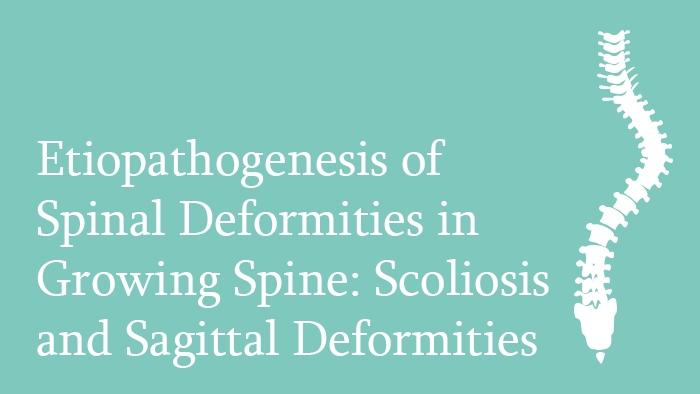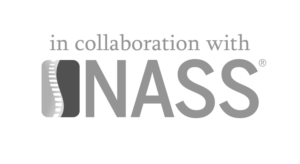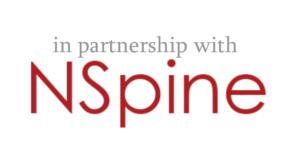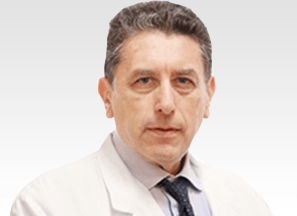Etiopathogenesis of Spinal Deformities in Growing Spine: Scoliosis and Sagittal Deformities
This spine surgery lecture is about the etiopathogenesis of scoliosis and sagittal deformities, including kyphosis and lordosis.
Enrol to View This Lecture
Access to all 180 Spine Lectures with our Spine Surgery Education Programme.
Lecturer: Marco Brayda-Bruno, MD
Includes:
- Online Lecture Presentation
- Pre- and Post- Learning Assessments
- Additional Learning Materials (Standard Package only)
- Up to 3 CME Credits
Ref.ID: 5_2_bruno
DOI: 10.28962/01.3.084
What you will cover in this lecture
The spinal deformities (scoliosis, kyphosis, lordosis) of any etiology are often combined, and must be addressed together in a three dimensional vision. Defining the precise etiology of any deformity is the first mandatory step before any kind of treatment. The etiology of idiopathic scoliosis is multifactorial, and includes genetic factors, which are crucial and well documented but still somewhat elusive, as well as neurologic, metabolic and biomechanical factors. Neuromuscular scoliosis is the most common type of secondary scoliosis, and in this group the prevalent cause is cerebral palsy. In sagittal deformities such as Scheuermann disease genetic factors appear to be critical, but environmental contribution may also play a relevant role.
Learning Objectives
- To understand that basic deformities (Scoliosis, Kyphosis and Lordosis) are often combined.
- To understand the three dimensional character of deformities
- To understand that scoliosis is an expression of multifactorial eitiology
- To understand the genetic factors involved in idiopathic scoliosis
- To recognise the neuromuscular scoliosis as the most frequent sceondary scoliosis
- To recognise the precise eitiology of any deformity as prerequisite for treatment
Target Groups
Practicing Spine Surgeons
in Orthopaedic or Neurosurgical services for Continuing Education or recertification
Marco Brayda-Bruno, MD
- Head of Chirurgia Vertebrale III (Scoliosis), IRCCS Istituto Ortopedico Galeazzi, Milan, Italy
- Professor of Spine Surgery, University of Milan Bicocca
- Advisory Board, European Spine Journal
eccElearning Participation
Editor
Author
Lecture Presentation
Etiopathogenesis of Spinal Deformities in Growing Spine: Scoliosis and Sagittal Deformities
Includes:
- Online Lecture Presentation
- Pre- and Post- Learning Assessments
- Additional Learning Materials (Standard Package only)
- Up to 3 CME Credits
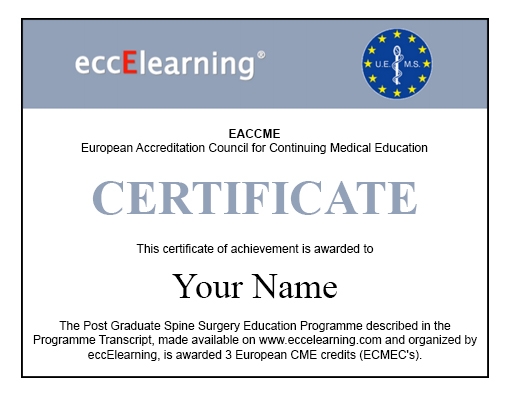
Enrol to View This Lecture
Access to all 180 Spine Lectures with our Spine Surgery Education Programme.
Frequently Asked Questions
Q: What is an eccElearning Lecture like?
A: Each Lecture includes the Lecture Presentation, Additional Learning Resources, Pre-Learning Quiz and Lecture Assessment.
Each Spine Surgery Lecture is viewed online in video format and lasts from 20-45 minutes. The Lectures contain relevant additional learning resources (book chapters, research papers, surgical videos, master lecture videos, case reports, review articles, etc.), which are presented in context and viewable immediately for your convenience.
Lecture 5.1 is an invited Master Lecture and does not include the Quiz and Assessment components.
Q: How much time will a Lecture take?
A: Lecture presentations typically take 20-45 minutes to run. However, candidates are required to review the compulsory and recommended additional learning resources contained within the Lecture. The time taken to view the Lecture and review the additional resources is in the range 3-4 hours per Lecture.
Q: What kind of credits do I get from the Lecture?
A: Each Spine Surgery Lecture can confer up to 3 Continuing Medical Education (CME) credits, certified by European Accreditation Council for Continuing Medical Education (EACCME). The CME credits are awarded to the candidate on successful completion of the online Lecture. The number awarded depend on the number of additional learning materials available in a Lecture - premium versions of the Diploma and Modules include more material for each lecture, so confer more CME Credits.
Q: What payment methods are accepted?
A: All major credit and debit cards.
Q: What are CME Credits?
A: CME stands for Continuing Medical Education. You are awarded CME Credits for undertaking an approved course of medical education. Each Lecture that you complete successfully adds to your CME Credits total. All Lectures provided by eccElearning are accredited by the European Accreditation Council for Continuing Medical Education (EACCME), of the Union Européenne des Médecins Spécialistes (UEMS). You can print out your Certificate of CME Credits after the completion of any Course or Lecture.
Q: What do I do if I fail a Lecture Assessment?
A: You are permitted to retake a Lecture Assessment up to two times. The Lecture Assessment will be made available to you again 14 days after a failed attempt. If you’ve failed the Lecture Assessment three times, please get in contact with us to discuss your options.
Q: What courses does eccElearning provide?
A: We have the Diploma in Spine Surgery with Modules individually purchasable, and Spine Surgery Specialist Certificates in Radiology and Physiotherapy.

